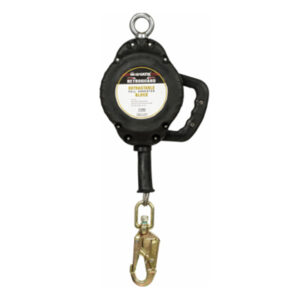Launching a SaaS startup in the United States is exciting and challenging. Founders often face questions like: Will my idea work? Do users need it? Is it worth the investment?
The best way to get these answers quickly and confidently is by building a Minimum Viable Product (MVP) through professional SaaS MVP development services. An MVP is a simplified version of your software that includes only the most essential features. It allows you to test your product idea, collect user feedback, and make improvements before committing to full-scale development. In short, it helps you save time, money, and resources while proving your idea’s real potential.
What Is a SaaS MVP and Why Does It Matter?
A SaaS MVP (Minimum Viable Product) is your product’s first working model — functional but straightforward enough to solve a key user problem. Instead of spending months building every feature, startups focus on delivering the core value to test market response.
The goal isn’t perfection; it’s validation. Once users start using your MVP, you can analyze what works, what doesn’t, and what needs improvement. That data helps you make smarter, low-risk business decisions.
Why US Startups Need SaaS MVP Development Services
The US SaaS market is highly competitive, with thousands of startups launching every year. Without proper validation, many fail before even reaching customers. Here’s how saas mvp development services can make a difference:
1. Faster Time-to-Market
With an MVP, you can launch your product in weeks, not months. This early entry helps you capture attention, gather real user data, and adjust your strategy before competitors do.
2. Lower Development Costs
Instead of investing in a complete product, you only pay to build what’s essential. This lean approach conserves funds while proving your idea’s market value.
3. Real User Insights
An MVP gives you real-world feedback from early users. You’ll learn what features they love and what needs improvement — guiding your next phase of development.
4. Stronger Investor Confidence
Investors prefer startups that show traction. A working MVP demonstrates your technical capability and user demand, making funding conversations much easier.
5. Built for Scalability
A well-designed MVP lays the foundation for future growth. When done right, your MVP can evolve into a complete SaaS platform without starting from scratch.
The SaaS MVP Development Process
Here’s how expert teams at Tech Formation guide US startups through an efficient MVP journey:
Step 1: Idea Validation
Every great product starts with research. Validate your concept by analyzing market demand, studying competitors, and identifying your target audience’s most significant pain points.
Step 2: Defining Core Features
List all potential features and narrow them down to what’s necessary for solving the main problem. Your MVP should do one thing well — not everything halfway.
Step 3: Designing a Simple User Experience
A good MVP doesn’t just work — it feels easy to use. Designers focus on clarity, clean navigation, and accessibility to ensure early adopters enjoy the experience.
Step 4: Agile Development
Developers use agile methods to build, test, and refine their MVP in short cycles. This approach allows for flexibility and fast iteration.
Step 5: Testing and Quality Assurance
Before launch, the product undergoes testing for usability, performance, and reliability. A bug-free experience helps you make a strong first impression.
Step 6: Launch and Learn
After going live, gather user insights through analytics, surveys, and interviews. This data drives your following product updates.
Step 7: Iterate and Scale
Use the feedback to refine your MVP, add new features, and prepare for broader market adoption. Successful SaaS companies repeat this process continuously.
Common Mistakes to Avoid During MVP Development
Even good ideas can fail if execution isn’t correct. Here are common pitfalls US startups should avoid:
- Building too many features: Keep your MVP focused and straightforward.
- Ignoring feedback: Your first users are your best guides — listen closely.
- Skipping analytics: Always track engagement and user behavior.
- Not planning for scale: Use technology that can grow with your product.
Avoiding these mistakes helps ensure your MVP is efficient, user-friendly, and scalable.
How SaaS MVP Development Partners Help Startups Grow
Working with a professional development partner offers more than just technical help — it adds strategic direction. A skilled team assists you in:
- Prioritizing product goals and defining scope.
- Choosing the right tech stack for scalability.
- Designing an intuitive, user-focused interface.
- Launching faster with fewer risks.
This partnership allows founders to focus on business growth while experts handle the technical execution.
Conclusion: Build Smart, Test Fast, and Scale with Confidence
In today’s fast-moving US startup landscape, speed and validation are everything. Building an MVP helps you test your idea, attract investors, and learn from real users — all without overcommitting resources. By choosing professional saas mvp development services, you can launch smarter, gather valuable insights, and grow with confidence.
If you’re ready to bring your SaaS vision to life, partner with Tech Formation — a trusted MVP development company in USA helping US startups validate ideas, build MVPs, and scale successful SaaS products. Start small today and build the foundation for tomorrow’s success.


